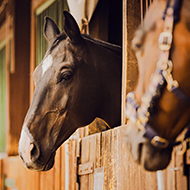Designer dog breeds at increased risk of ticks
Poodle cross-breeds have become popular due to their less allergenic fur.
A new study has suggested that designer cross-breeds, such as cavapoos, goldendoodles and cavachons, are at a higher risk of tick infestation.
Researchers say that this is due to their shared poodle heritage, with standard poodles rating as the second highest breed at risk.
The project, conducted as part of the Royal Veterinary College’s (RVC’s) VetCompass programme, saw researchers rank dog breeds based on their likelihood of tick infestation. They used anonymised data, collected as a random sample from the health records of over 900,000 dogs in the UK.
The findings suggest that ticks are a common parasite among dogs, with 2,000 cases identified over five years. One in 50 dogs were diagnosed with at least one infestation during the five-year period.
Possible risk factors were investigated, including characteristics such as breed purity, body weight and haircoat.
Designer breeds with poodle heritage, which have in-part become popular due to coats considered less allergenic, were identified as higher infestation risks.
However, while designer breeds did have a higher risk, there were some longer established breeds that also carried a high risk. As well as the standard poodle, the Parson Russell terrier, golden retriever and miniature schnauzer were all identified as higher risk breeds.
In contrast, Staffordshire bull terriers, rottweilers and chihuahuas all had lower odds of tick infestation.
Other characteristics which the research group linked with an increased risk of tick infestation included dogs which were male, those with medium-length coats, a V-shaped drop or long, floppy ears.
Dr Dan O’Neill, associate professor of Companion Animal Epidemiology at RVC and the lead author of the study, said: “There is no single perfect dog breed, so it is critical that we fully understand the strengths and weaknesses for the breed we choose to bring into our own family.
“Owners of dogs that are either poodle or have poodle heritage can now be aware of the need to routinely check their dogs for ticks and to perhaps ensure the coats of these dogs are kept short.”
The full study can be found in the Journal of Small Animal Practice.
Image © Shutterstock



 Zoetis has launched a new survey to identify management techniques for Equine Herpes Virus (EHV).
Zoetis has launched a new survey to identify management techniques for Equine Herpes Virus (EHV).